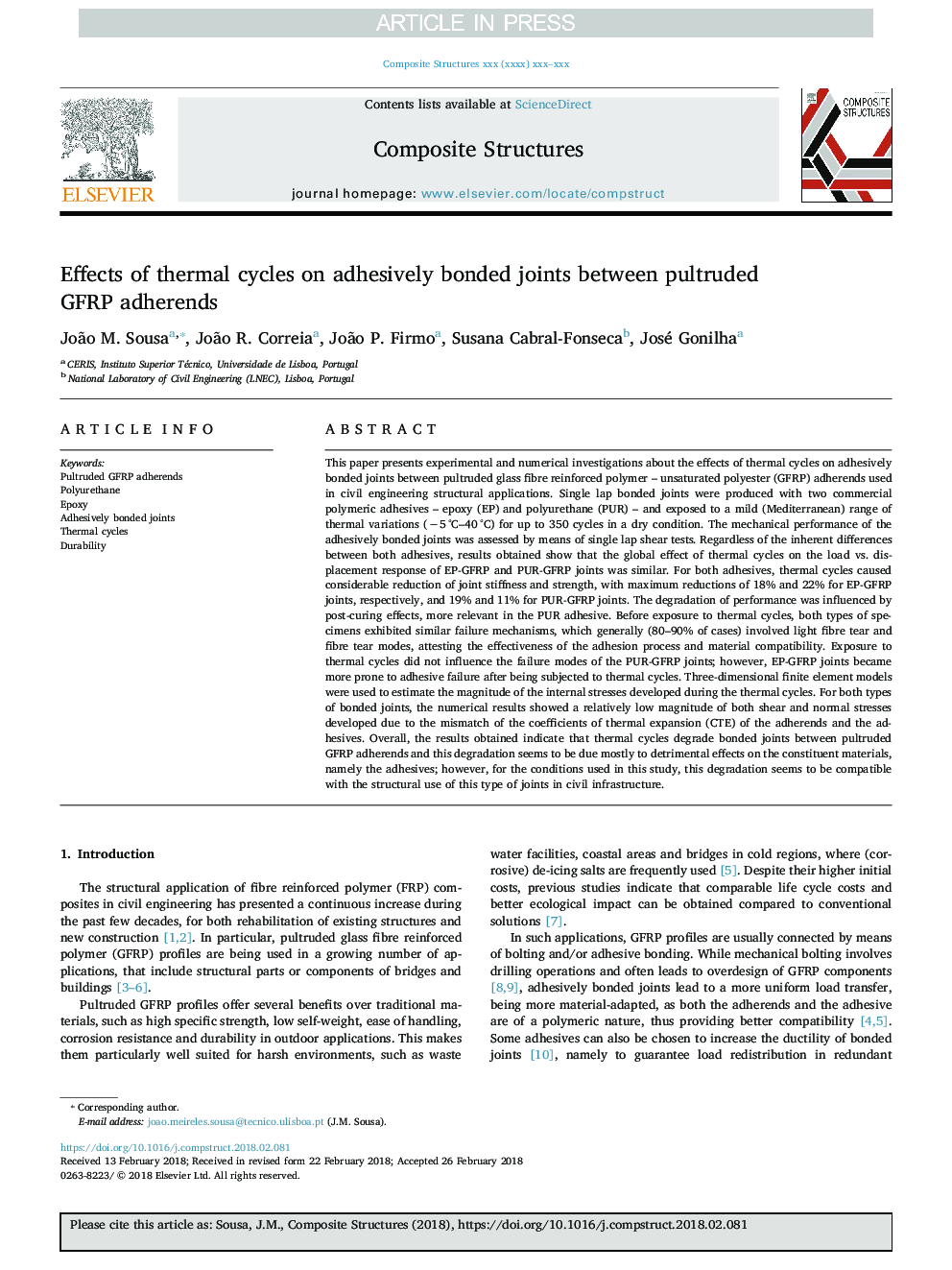| کد مقاله | کد نشریه | سال انتشار | مقاله انگلیسی | نسخه تمام متن |
|---|---|---|---|---|
| 8959947 | 1646367 | 2018 | 12 صفحه PDF | دانلود رایگان |
عنوان انگلیسی مقاله ISI
Effects of thermal cycles on adhesively bonded joints between pultruded GFRP adherends
دانلود مقاله + سفارش ترجمه
دانلود مقاله ISI انگلیسی
رایگان برای ایرانیان
کلمات کلیدی
موضوعات مرتبط
مهندسی و علوم پایه
سایر رشته های مهندسی
مهندسی عمران و سازه
پیش نمایش صفحه اول مقاله

چکیده انگلیسی
This paper presents experimental and numerical investigations about the effects of thermal cycles on adhesively bonded joints between pultruded glass fibre reinforced polymer - unsaturated polyester (GFRP) adherends used in civil engineering structural applications. Single lap bonded joints were produced with two commercial polymeric adhesives - epoxy (EP) and polyurethane (PUR) - and exposed to a mild (Mediterranean) range of thermal variations (â5â¯Â°C-40â¯Â°C) for up to 350 cycles in a dry condition. The mechanical performance of the adhesively bonded joints was assessed by means of single lap shear tests. Regardless of the inherent differences between both adhesives, results obtained show that the global effect of thermal cycles on the load vs. displacement response of EP-GFRP and PUR-GFRP joints was similar. For both adhesives, thermal cycles caused considerable reduction of joint stiffness and strength, with maximum reductions of 18% and 22% for EP-GFRP joints, respectively, and 19% and 11% for PUR-GFRP joints. The degradation of performance was influenced by post-curing effects, more relevant in the PUR adhesive. Before exposure to thermal cycles, both types of specimens exhibited similar failure mechanisms, which generally (80-90% of cases) involved light fibre tear and fibre tear modes, attesting the effectiveness of the adhesion process and material compatibility. Exposure to thermal cycles did not influence the failure modes of the PUR-GFRP joints; however, EP-GFRP joints became more prone to adhesive failure after being subjected to thermal cycles. Three-dimensional finite element models were used to estimate the magnitude of the internal stresses developed during the thermal cycles. For both types of bonded joints, the numerical results showed a relatively low magnitude of both shear and normal stresses developed due to the mismatch of the coefficients of thermal expansion (CTE) of the adherends and the adhesives. Overall, the results obtained indicate that thermal cycles degrade bonded joints between pultruded GFRP adherends and this degradation seems to be due mostly to detrimental effects on the constituent materials, namely the adhesives; however, for the conditions used in this study, this degradation seems to be compatible with the structural use of this type of joints in civil infrastructure.
ناشر
Database: Elsevier - ScienceDirect (ساینس دایرکت)
Journal: Composite Structures - Volume 202, 15 October 2018, Pages 518-529
Journal: Composite Structures - Volume 202, 15 October 2018, Pages 518-529
نویسندگان
João M. Sousa, João R. Correia, João P. Firmo, Susana Cabral-Fonseca, José Gonilha,